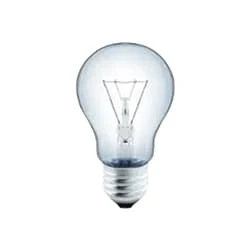Contactor and Timer connection | Digital Timer Connection with Contactor
Contactor and Timer connection:
This diagram shows the contactor and timer connection. In this circuit diagram, we want to describe how to connect a timer and contactor connection with a lamp and CB ( circuit breaker ). In this circuit, we use a circuit breaker, a light, a contactor, and a timer. If you want more clear experience please follow our youtube video.
Diagram of Contactor and Timer connection wiring:
Components Need for this Project:
You can get the components from any of the sites below:
- Magnetic Contactor [See Buy Click Amazon]
- SP MCB [See Buy Click Amazon]
- 8-Pin Timer [See Buy Click Amazon]
- Light [See Buy Click Amazon]
*Please note: These are affiliate links. I may make a commission if you buy the components through these links. I would appreciate your support in this way!
$ads={1}Read Also:
Components used to make the Contactor and Timer connection:
01. Magnetic Contactor
 |
| Fig 2: Magnetic Contactor |
A magnetic contactor is an electrical device used for load control, automation, and protection. It is much like a magnetic reel. However, relays are generally used for low power and voltage, on the other hand, when we think of high power, these heavy-duty contractors only come to mind. It basically works by switching the load on and off. It has 3 terminals whose inputs are denoted as L1, L2, L3, and outputs as T1, T2, and T3. The circuit of the load is made in automation mode or protection using auxiliary contacts. It has two types of terminals. 1) Normally Open (NO). 2) Normally Closed (NC).
02. SP MCB
 |
| Fig 3: SP MCB |
MCB SP means single pole it protects only one phase switching. MCB (Miniature Circuit Breaker) Curswitch is the most basic general-purpose switch that you use to control a light or another device from one location. These Switches Have Two Brass-Colored Screw Terminals Connected to the hot Power Source Wires. (MCB) For any Distribution Board, the Protection System Must be Used in The Incomer. Phase and Neutral Single Phase Supply to break. 120-volt circuits, 15-20 amp single pole breaker is typically used.
03. 8-Pin Timer
 |
| Fig 4: 8-Pin Timer |
Timer is a specialized type of clock used for measuring specific time intervals.An electromechanical cam timer uses a small synchronous AC motor turning a cam against a comb of switch contacts. This type of timer often has a friction clutch between the gear train and the cam, the cam can be turned to reset the time.A simple example of the first type is an hourglass. Working method timers have two main groups: hardware and software timers.Most timers give an indication that the time interval that had been set has expired.
04. Light
 |
| Fig 5: Light |
CFLs work in a completely different way from ordinary lamps, they work by using a different process called fluorescence rather than generating light from heat. A typical light bulb wastes 90% of energy and converts only 10% of energy into light, this is where CFL has the biggest advantage. CFL- Curved or conical glass tube filled with argon and a small amount of mercury vapor. The inner wall of the glass is coated with fluorescent material. CFL- It is manufactured using the principle of creating fluorescent light. CFL- Originally white in color but now the construction and use of CFLs producing colored light has become popular.
Thank You for visiting the website. Keep visiting for more Updates.
$ads={2}
Frequently Asked Questions
How is a contactor connected?
The contactors are controlled by a separate control circuit diagram, which usually includes a control voltage source, such as a control transformer or a low-voltage power supply. The control circuit diagram is connected to the control terminals of the contactor, usually labeled "coil" and"control coil".
How to connect the contactor to PLC?
Follow the current flow from the source line or + to the input or common side of the switch, to the output side of the switch, to the line or + side of the load, to the neutral or - side of the load, back to the source neutral or -. In your case the switch is the PLC output or the load is the coil of the contactor.
What are the 2 main components of a contactor?
Electromagnet: This is the most vital component of the contactor. It provides the driving of the force that is required to close the contacts of the contactor. Enclosure: The enclosure provides insulation or protection from personnel touching the contacts.
Why do we use a contactor instead of MCB?
The contactor is simpler than the circuit diagram breaker and has several contacts. Many of them are movable then others are fixed, or this is to ensure the service when the electromagnet attracts it. A contractor has an electromagnetic coil to operate at a low current flow and voltage.
How do you control a contractor?
A contactor is typically controlled by a circuit diagram that has a much lower power level than the switched circuit, such as a 24V coil electromagnet controlling a 230-volt motor switch. Unlike general-purpose relays, contactors are designed to be directly connected to high-current flow load devices.






Post a Comment
Do leave your comments